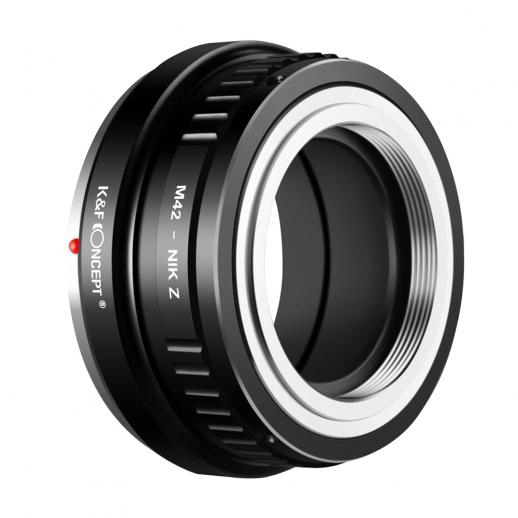Have you ever questioned if you should utilize your new DSLR camera’s antique lens? One of those who have been sitting on a locker for too many years, perhaps? I’m going to teach you in this article how and when to configure your modern DSLR camera’s antique screen-mount lens.
Certainly, there are several different vintage and lens brands of numerous mounts, but there is a special spot for using M42 lenses on nikon mount, as it is used for so many beautiful vintage camera from 1949 to the 1980s.
These include Zeiss Contax vintage cameras, Zenit Soviet cameras, Spotmatic Pentax cameras, Mamiya Sekor cameras and Practictica cameras which could then be mentioned below. There are several lenses from a certain era on websites such as eBay which have been available at reasonably inexpensive rates.
So what else can we do with all those lenses essentially? Wouldn’t it be easier than attempting to insert one in our camera with your advanced sharp automatic focus lens? How to start using M42 lenses on Nikon effectively. Don’t get puzzled, I will answer all of these by one.

How Can Start I Using M42 Lenses On Nikon Camera?

To enable it on your DSLR camera, many camera brands require a simple, cheap and adapter. For example: “Nikon!” Nikon F fixed cameras, which would include today’s DSLR, chose, in some way, to differentiate the flange from the maximum aperture of certain other cameras, including M42 mounting.
This is why you can not concentrate on infinity, just smaller than infinity when you’re using a basic adapter for your M42 lens on your Nikon frame.
The longest distance to the objective varies from lens to lens (for instance about 20 m for a lens of 55 mm). You must have a correcting glass adapter that tries to fix the flange to just the focal plane gap and even functions as a miniature telecommuter to reflect on infinity. And all these glasses degrade the picture quality of the lens in one or another direction.
I have two and therefore will shortly be publishing another post to equate the picture quality of these two glass adjusters to a non-corrected Nikon adapter. That doesn’t indicate that you can’t appreciate your retro lenses through your Nikon camera, but then you should concentrate on shorter distances without adjustment glass or use post-processing to repair the images acquired with those adapters.
Be sure that this is thick and solid with the right mount when selecting your metal adapter because there are certain adapters designed for the low-cost thin metal plate that is going to compromise the mounting of your camera.
Things To Take Into Account:

- Many of the antique lenses available today in the second-hand market come from a discarded old camera bag that has been sitting for years in some kind of a shed or a duvet. For years, these lenses have been stored in a dark or damp environment and grow a form of fungus inside that feeds on and scores on the glass (yes, it breaks the glass!)
- Leave a trace that appears like a thin web of a spider or a white spot smaller than a grain of dust can be. Only in a damp and dark atmosphere does this fungus grow. Therefore you always take careful care of your lenses and leave them exposed in a dry, non-humid climate.
- Don’t leave your camera or lenses in a locked camera case for a long period (including your new DSLR cameras and lenses) or any of them. Do not purchase these if you find such a mirror. The lens cap, glass and much of the cases they leave a permanent imprint on the lens may not always be easy to wash and they ruin it.
- This is also rumoured that today’s common lens brands’ consumer services such as Canon, Nikon, Zeiss, etc. do not allow fungal repair lenses to prevent infection at their workshop. If you are fortunate, smaller and lighter mushrooms could be washed with solutions such as Eclipse optics cleaning solutions.
- Any antique lenses may be labelled with their prior reparation, repair or cleaning that was not performed properly and the lens itself was damaged. Lenses washed with scraped and sanded out the glass, fungus labels cleaned, improper cleaning solutions used to pull the lentil cover and poured oil on the surface of the lentil while helicoid or open blades were cleaned.
- You will see them using a method to locate a light source at the back of the glass and gaze at them at the appropriate angle within the prism. Otherwise, you will hear about the background of the prism.
- Simply disregard all the glass blocks of the lens, tiny cracks and small concentrations of dust that don’t dull all the surface of that same lens, small debris or finger from the front or backend of the lens. These markings are not would they have a serious effect on your photo’s image.
- Look particularly for stuffed out coatings, scraped swirl marks, sanded out or scratched lens coverings, or something on the lens’ surface that appears dull or wear-out. The lens may be fixed or not obviously it depends on some other issues. You will never wholly remediate broken coverings and the accuracy of your images is compromised.
Conclusion
Hope that you find your perfect optical SLR with retro lenses. If you want to research these vintage lenses more, just check out this article for Using M42 Lenses on Nikon written above for greater experience.

Leave a Reply